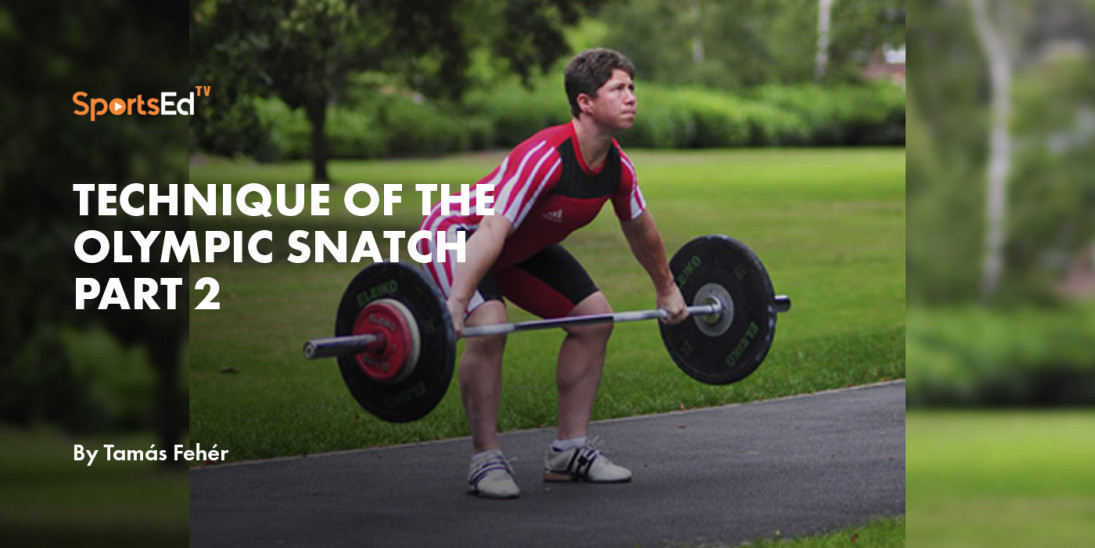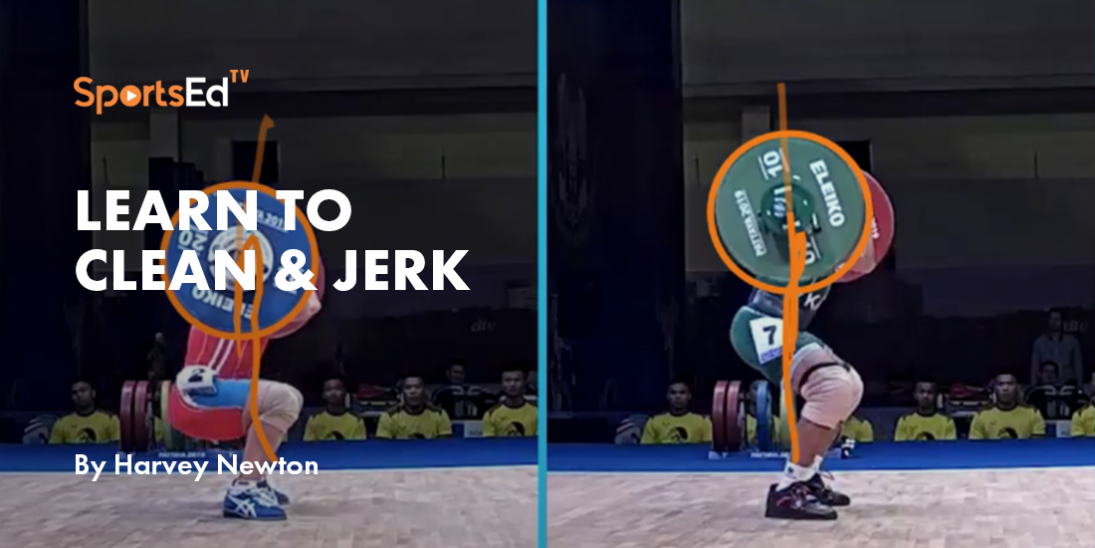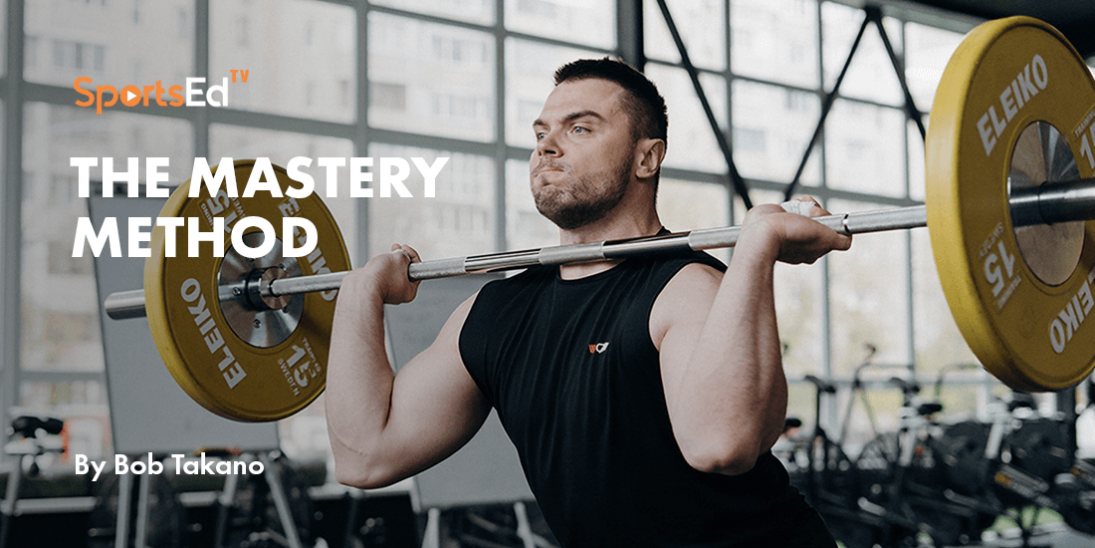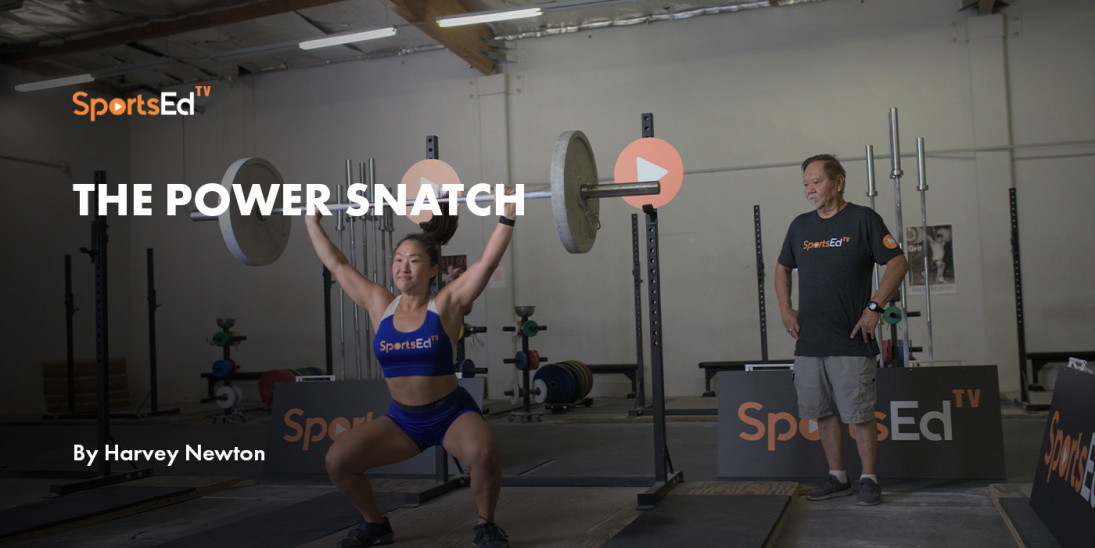Weightlifting
Welcome and thanks for visiting...

TECHNIQUE OF THE OLYMPIC SNATCH PART 1
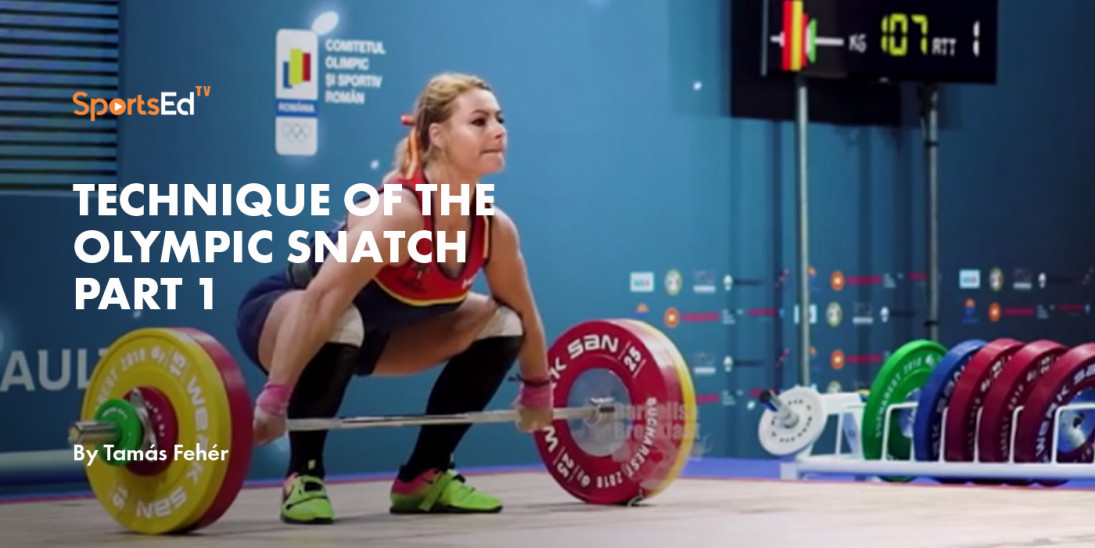
Modern, biomechanically well-founded motional conditioning in certain phases of the execution requires a high-velocity ejection, a maximal or optimal acceleration of the barbell, and the determination of body parts. The most decisive part of these phases is the explosion, which is an integral and essential element of the Snatch.
The explosion-free, obsolete execution is not energy efficient and does not allow for the full and effective utilization of the athletes’ physical strength and explosive abilities. One of the most important goals in the technical teaching and then the technical practice for youth athletes is to ensure the proper imprinted execution of the explosion.
The essence of the explosion is an impulsive power transfer to the bar by which the initially –relatively– low lifting speed is outstandingly accelerated in a rapid transition. There is a high-velocity impact between the hips (or rarely the upper part of the thighs), and the kinetic energy gets transferred onto the bar, resulting in a dynamic shift following the root direction of the explosion and the contraction of the arms. A technically well-prepared weightlifter can deliver a 20-60-pound better output by applying the explosion depending on the weight category, the performance level, and the type of competition exercise.
In the performance of the explosion, the thigh erectors and the trunk erectors play a predominant and crucial role owing to their immensely dynamic contraction, the existence of which is one of the most critical, genetically determined prerequisites of the professional weightlifter at the competition level. The absence of dynamic strength exertion is proven to be a serious inhibiting factor for the individual in accomplishing outstanding results. In the following text, the explosion-based Snatch is going to be described in more detail and will be referred to as “The” Snatch.
Important
Before we proceed with the detailed technical analysis, we must refer to a basic training principle. That is the “Considering individual characteristics principle”. As there are no two sets of fingerprints alike in the world, weightlifters also differ. The physique, its proportions, the property set of muscles and joints, the Central nervous system (CNS) attributes, dynamic strength exertion ability, etc., all differ and determine the technique individual weightlifters execute the exercises with. The technique always uniquely maintains those primarily physical and biomechanical attributes that are valid to all individuals independent of physical and personal characteristics. The figures in the following technical analysis (angle parameters in degrees, acceleration and velocity data, etc.) are only normative standards; hence, they are not exact values applicable to everyone.
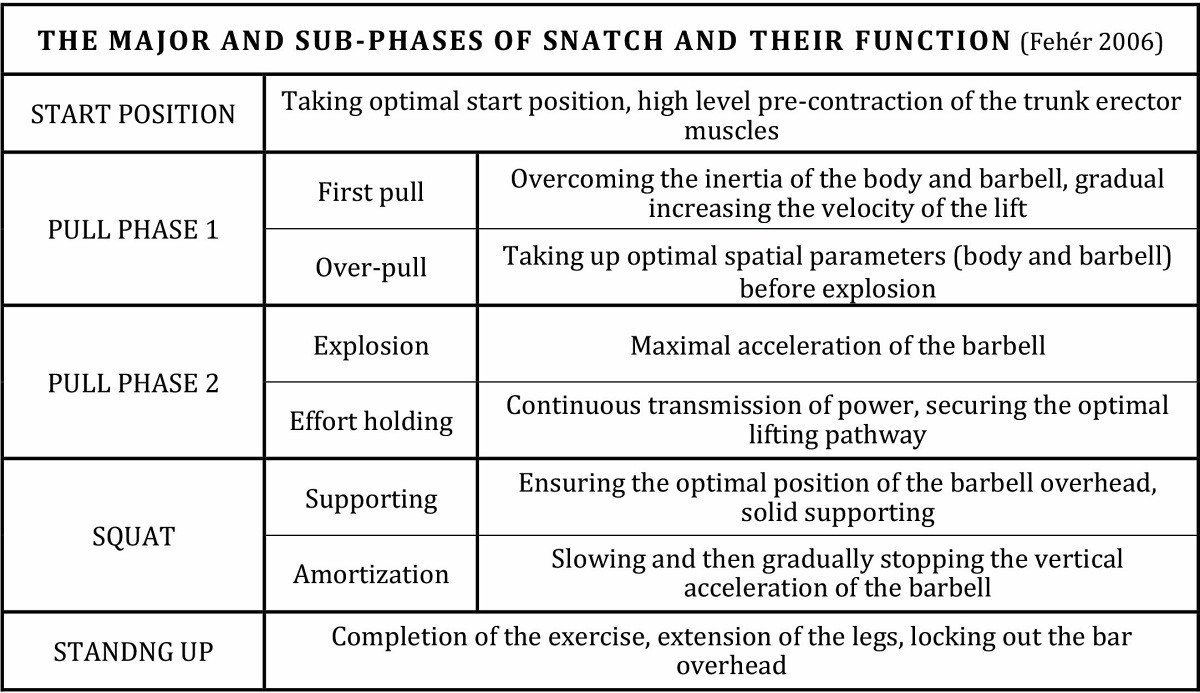
Snatch Start position
The early formation of the individual start position is extremely important. The quality or even the success of the exercise can depend on the extent of deviation from the optimal setting. The athlete squats, legs pelvis-width apart or somewhat more, the feet are slightly divergent, and soles are placed fully on the ground.
The bar is very close to or may even touch the shin. The projected vertical plane of the bar is approximately above the Metatarsus, the frontal part of the deltoid muscle should be three quarters of an inch to two inches beyond the bar’s vertical plane, may be right above but can never fall behind.
The pelvis is at the horizontal level of the knees; a slight amplitude modulation is allowed. The grip width has to be adjusted the way so that the bar has to arrive at the lower third of the pubic bone at the moment of the explosion. The head is facing forward, slightly above the horizontal level, and the spine is straight, a little concave.
The hip joint angle is 38° on average (36-40°), that of the knee joint is 70° (67-73°), while the ankle joint is 64° (63-65°). The angle between the bar and the arm is 56° (49-63°). Every 2° reduction of this value results in a 2-and-a-half-inch shorter vertical extension. The arms and the wrist joints are straight.
The athlete grabs the bar with a hook grip, the essence of which lies in the tightly secured thumb between the index and the middle finger. Other grips can later undermine the dynamic acceleration phase because of the unstable control of the bar. The perfect start position is unimaginable without the high level of pre-contraction of the trunk erectors. The pre-contracted muscles contributing to the lifting movement help to overcome the initial stationary position of the body and the bar.
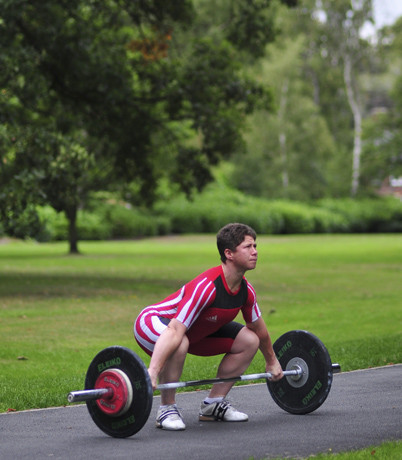
Pre-contraction in the start position can be done in several ways. Depending on individual motional patterns, we can perform one or more slow or fast swinging hip movements or one vigorous thrust (based on the Bulgarian style) to achieve the adequate level of pre-contraction and the optimal final start position at the same time. The instruction for pre-contraction is relevant in the early stages of technical teaching.
The trunk erectors are maximally contracted, the thigh erectors and the gluteal muscles are in a highly static contraction, while the arm erectors and the trapezius are in a moderately toned state; the arm erectors are now relaxed as the properly secure grip on the bar is assured by the strong, static tension of the lower arms and the hands. The last medium inhalation must be held until the pre-contraction is completed. The barbell is still on the ground, but owing to the pre-contraction, a moderate effect of strength can be registered.
Snatch Pull phase 1 – First Pull and Over-Pull.
It starts right after careful preparation or perhaps with a minimal delay. This delay cannot take longer than a brief moment as the highly static tension in the muscles entails a high energy expenditure, and we want to avoid unsubstantiated energy loss. The velocity can be fast, seldom tug-like or slow, and gradually accelerating.
A slow, low-key pull is counter-productive as it limits the possibility of executing the dynamic strength exertion in the explosion to come. This type of pull forces the athlete to gain the optimal and top speed from a relatively low speed, making the execution inefficient, broken, fragmented, and discontinuous. The speed of the pull is largely determined by the body mass, which features a rising tendency as we step up in the weight categories. The impulsive, quick pull usually entails a less spectacular explosion with a high load on the thigh and trunk erectors. The slower pull generally assumes the opposite attributes: relatively weaker leg muscles and more developed gluteal and back muscles, delivering a faster, more dynamic explosion.
The pull starts with the active extension of the legs. The hip and the knee joint angle gradually open, and the velocity of the barbell in the first 1-2 inches is 0.25-0.30 m/sec and gradually accelerates. At knee level a 1.2-1.5 m/sec pull velocity can be registered, the hip joint angle is 82° on average (78-86°), the knee joint angle is 140° (135-145°), while the ankle joint is 90 ° (88-92°). After the start from the floor, we see the „barbell-athlete kinetic unit” with a common mass and balance.
During the pull the barbell can only momentarily diverge from the vertical axis, in order to achieve that the bar is approaching the body in the upward movement.
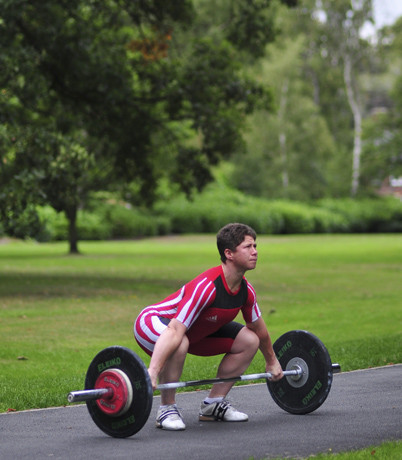
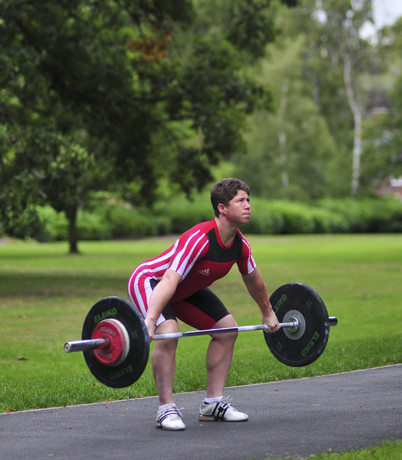

The shoulders move along a forward arch, up to 4 inches over the vertical projection of the bar. In this sub-phase, the upward movement of the hip joint is nearly vertical, the trunk remains in the same spatial position until the bar reaches knee level. Over the knee level, the leg extension gradually gets slower, so is the pull velocity and the erected trunk is approaching an almost completely vertical plane, thus reducing its load.
The shoulders are still over the vertical plane of the bar but slowly start moving backward as the knee joint angle decreases. At the end of this sub-phase, the bar reaches the central third of the thigh, and its plane is at the middle of the feet. This involuntary, sensorimotor movement requires no specific training as it derives from the anatomic functions of the human body. Should you attempt to do so, you can expect an excessive amplitude and inadequate execution that can adversely affect the motional development of young athletes.
The knee joint angle drops to an average 115° (112-118°), the hip joint angle changes to 116° (113-119°) and the ankle joint angle to 76° (76-78°). The bar gets to the minimum pull velocity of Pull Phase 1 at 1.2-0.9 m/sec. The athlete prepares to execute the explosion. This posture is the final point in Pull Phase 1, which is at about 35 percent (33-37 %) of the total vertical extension.
In this sub-phase, the trunk erectors - up to the knees - perform a high static while the thigh erectors perform a dynamic strength exertion, the arm erectors are relaxed, the shoulder girdle muscles and the arm erectors with minimal tension (but still with straight arms) prepare to execute the next sub-phase of the pull. Concurrently with the closing angle of the knee joint, a short, dynamic contraction can be registered in the Biceps femoris, which, in spite of being the antagonist muscle of the Quadriceps, constantly supports its erector function and plays an active role in stabilizing the trunk’s balance.
Read more:
Technique of the Olympic Snatch - Part 2
Special thanks for the photos to Natasha Perdue, Team GB, London 2012 Olympian
Tamás Fehér © 2020



